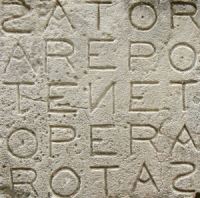All articles in 'Formula Forensics' Category

I have imported some data that comes in as a number that I need to convert to h:mm. The data string will be either 1,3,4,5,6 integers long and looks like this…
Help
Continue »
Over Easter, while we were all busy eating our Easter Eggs, at the Chandoo.org/Forums, Slk213 was worried about how to retrieve the Nth number from a row of data which had gaps in it.
Today in Formula Forensics we will look at how to solve this problem.
Continue »Formula Forensics No. 017 – A Solution to Maljzm’s problem.

Today Faseeh, from the Chandoo.org Forum, joins Chandoo.org as a contributor with his first post.
Faseeh, helps find a solution to Maljzm’s problem of looking up time values from a list and comparing them to determine if a value meets some criteria.

“I was trying to calculate the average DJIA # by month. I had the data by day so tried various combos (none of which worked) (:-”
Learn how to help Suzanne average the DJIA on a particular day and learn about a new Excel Function all in one post.
Continue »
Cornelia wanted to cumulatively increases prices to a lot of products.
See how it was accomplished using an Array Formula to assist.

“I have a large list which includes blanks, I want to retrieve the list without the blanks”
Faseeh, responded with a neat array formula.
Today Formula Forensics pulls Faseeh’s Formula apart to see what makes it tick.
Continue »
Formula Forensics is on Vacation.
Formula Forensics is actually on a working Holiday and has visited the Excel Hero Academy this week.
So today in Formula Forensics we will showcase some of the work that have been derived from the learning’s at the Excel Hero Academy.
 ;
;
Today we look at a very neat way of doing a complex Nested If or Vlookup style problem with a simple but beautiful Sumproduct based formula.

Lykes asked Formula Forensics “How does a formula work?” Lykes has been using the formula without understanding it.
The formula counts how many times the letters from a list of letters occur in a list of words.
Today we look at a Lykes question.

Count How Many Times a List of Values Occurs in a Range
(or How Can I Simplify My Formula)
Today in Formula Forensics we look at how to count how many times a range of values occurs within a Range of cells and in the process simplify a very nasty formula.
Continue »
Today in Formula Forensics we look at how to Calculate the Maximum value from a list subject to other fields meeting certain criteria:
Continue »
A common Forum Post question and one that Chandoo has written about a few times is, Does my data overlap with another range?
This week Formula Forensics examines Pradhishnair’s Overlapping Chaninage Problem where he wants to know if two values overlap with a range of other values
Continue »Finding Friday the 13th using Excel (and learning cool formulas along way)

Not that I have friggatriskaidekaphobia or anything. But since today is Friday & 13th, lets put our Excel skills to test and find out when the next Friday the 13th is going to be.
Continue »
One of the most asked questions within the posts and Forums at Chandoo.org is, How Does Sumproduct work ?
Today in Formula Forensics we take at look at just that with a few worked examples.
Continue »
Palindrome: – A palindrome is a word, phrase, number, or other sequence of units that can be read the same way in either direction, with general allowances for adjustments to punctuation and word dividers (“Wikipedia”).
This week in Formula Forensics we’re having a look at determining if a cell contains a palindrome.
Continue »

